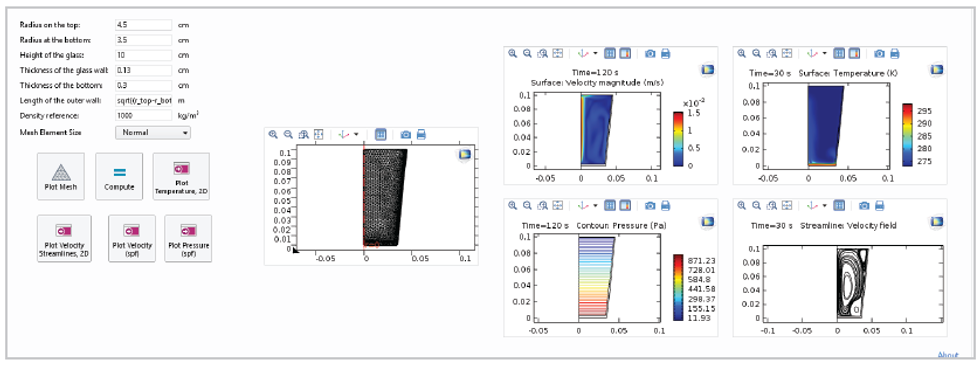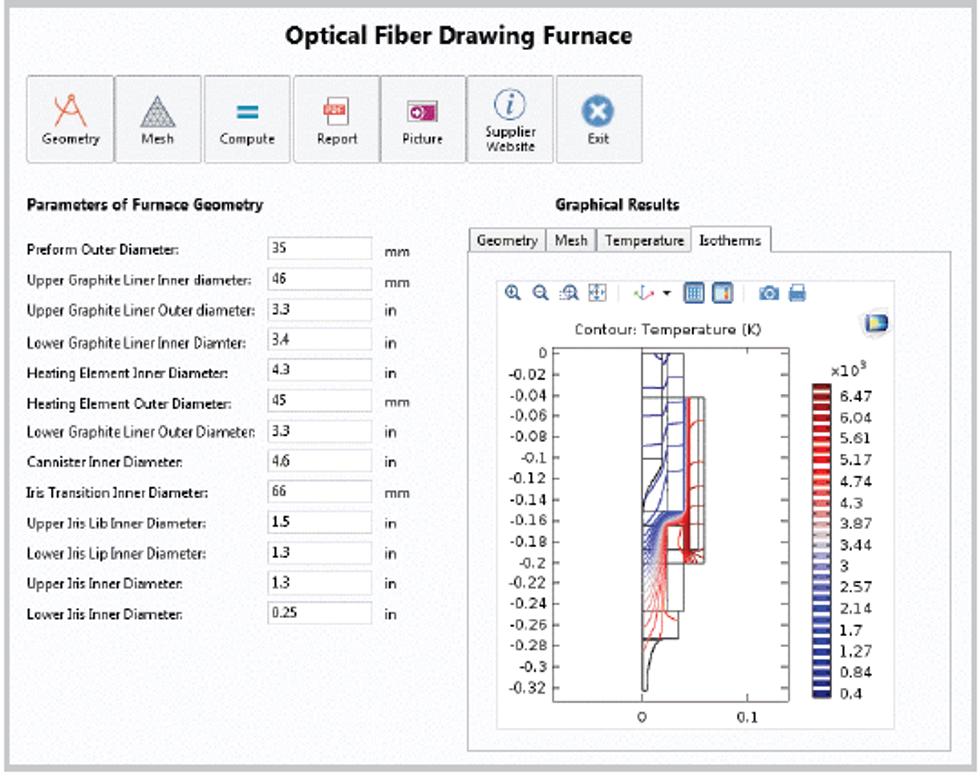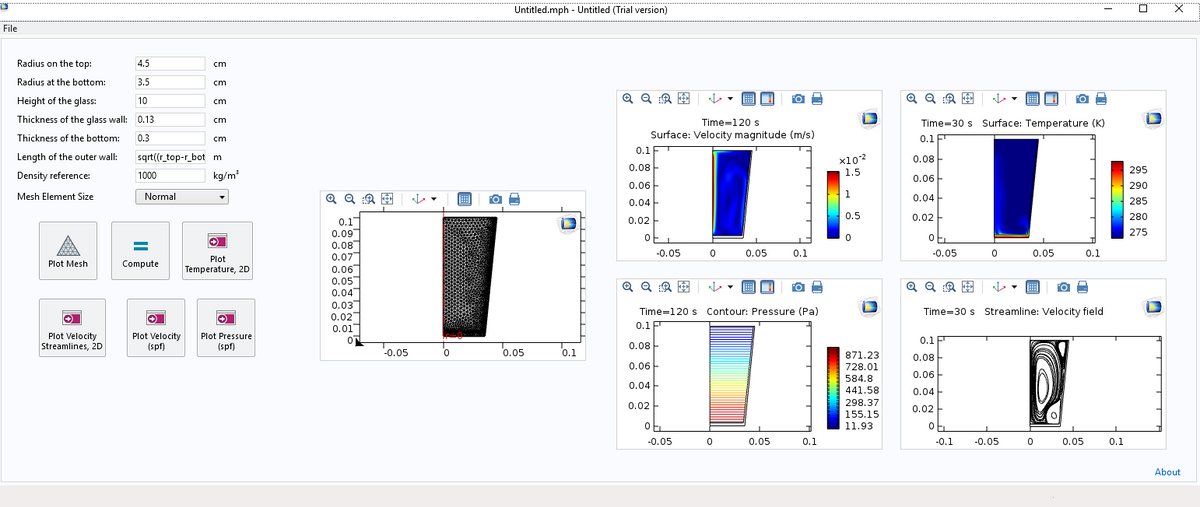The following is an excerpt from Multiphysics Simulation 2017.
By Gary Dagastine
Providing students with the knowledge and skills to flourish in the workforce is at the core of higher education, but when it comes to teaching physics to undergraduates there are many challenges. The growing appeal of science, technology, engineering and mathematics (STEM) curricula has only magnified them, given the widely varying backgrounds and interests of many students.
A particularly thorny challenge is incorporating inquiry-based learning into a course, a method of teaching that involves students developing and answering their own research questions. This hands-on approach in which students must solve realistic physics problems on their own is vital for a better understanding of physics concepts. However, it is hard to structure effectively in lecture-based courses where the coverage of required material does not allow much time for the development of field-specific skills.
In a landmark effort to address this issue, the University of Hartford in Hartford, CT, has integrated multiphysics analysis software and applications into junior-year fluid mechanics and heat transfer courses as a required part of the coursework.
“Our undergraduate engineering curriculum contains many problem-based and project-based learning components,” said Dr. Ivana Milanovic, professor of mechanical engineering. “However, before simulation apps, it was challenging to incorporate effective inquiry-based learning into a course. The COMSOL Multiphysics® software lets us quickly design, apps based on multiphysics models to supplement lectures.”

The apps let students view and control designated inputs, settings, and outputs, and a simplified interface enables them to take advantage of the software’s powerful computational tools without requiring them to be numerical simulation experts.
As a result, students can conduct virtual experiments easily. Visualizing what happens when a system’s operating parameters and initial and boundary conditions are altered helps cement relevant concepts into their understanding. Apps also add value to University of Hartford’s industry-sponsored research and increase students’ appeal to potential employers, because many aerospace-and manufacturing-related companies in Connecticut use simulation software.
HOW APPS CAME TO BE
Milanovic integrated simulation apps into successive junior-year courses in fluid mechanics and heat transfer, a decision based on learnings from a graduate-level course on mathematical modeling with COMSOL® software, given by Dr. Thomas Eppes, professor of electrical and computer engineering.
Eppes said, “Various studies validated our choice of software, but what students tell us is more meaningful. They say the use of simulation software has enhanced their learning, helped them easily visualize difficult theoretical concepts, and exposed them to valuable simulation methodology. These anecdotal reports are supported by the course’s 99% completion rate.”
In light of this, Milanovic began to think about incorporating modeling and simulation software into the undergraduate curriculum. But there were issues. “Many faculty perceived that the use of industrial-strength software with undergraduates would require a major time investment and an over-reliance on them by students,” she said. “They also wondered how useful it would be if students hadn’t previously taken, for example, a course in computational fluid dynamics (CFD).”
“The ease of working with simulation apps changed all that,” she said. “Students master theory and analytical problems through in-class discussions and self-study; their theoretical knowledge and analytical skills are assessed with major exams; and they conduct inquiry-based learning with the apps.”
HOW STUDENTS WORK WITH APPS
Milanovic’s junior-year courses contain increasingly complex simulation-based laboratory assignments designed to help students achieve a greater understanding of, for example, thermofluids. They also help students develop competencies in modeling and in technical report writing, which are essential for success in subsequent research and future employment. Working with simulation apps helps students create a narrative describing the boundary conditions and setup used in the model, as well as arrange visual data, charts, graphs, and equations.
One simulation that students are introduced to early on analyzes a blood sample flowing through a filtration device, studying fluid flow distribution, electric potential, and particle positioning. The students study the effects of different voltage levels and alternating polarity of the particles.
Other simulation assignments include analysis of non-Newtonian flow, swirl flow around a rotating disk, a water purification reactor, a journal bearing, and flow past a cylinder.
By the time students move on to the heat transfer course, they have already learned basic simulation skills. “I leverage this into more complex simulation assignments, including 2D heat transfer with convective cooling, heat conduction in a cylinder, shell conduction, and several others,” Milanovic said.
HELPING STUDENTS UNDERSTAND “WHY”
Students must also create their own apps based on simulations with specified inputs and outputs. When an app is complete, Milanovic asks a series of what-if questions to deepen understanding of basic cause and effect relationships. Students are also required to prepare written reports explaining why the results change from one case to another.
Students conduct a final independent research initiative where they prepare a work statement, review relevant literature, complete a technical study, and document the results.
Stefan Keilich, a mechanical engineering (ME) major with a minor in electrical engineering, created a wind tunnel simulation of airflow around a car for his final project. “I set variables for air speed, model height relative to the ground, wind tunnel dimensions, and model scale. The result was an awesome airflow trail pattern you could actually visualize,” he said.

Keilich said the apps have opened his eyes to their usefulness in describing a system to an associate who doesn’t need to know the technical details. They may even have given him a new career perspective. “Apps have increased my interest in engineering and I’d been thinking about robotics and automation, but now I can also see the appeal of work involving fluids and heat transfer,” he said.
Another ME major, Mark Markiewicz, said COMSOL apps have increased his immersion in the coursework. “Equations are hard to visualize, but apps give you a 3D view into the physics.”
Some apps are more industry-sourced, such as one focused on optical fiber drawing, a precise and sensitive process requiring careful temperature and position control in a draw furnace as well as a purge gas atmosphere to prevent oxidation of the heating elements and liners. The app (Figure 2) allows users to change geometric dimensions inside the furnace, such as the diameters of heating elements, to study the nitrogen gas purge velocity and temperature distribution.
Milanovic said these and other pilot course results such as students’ grades, the quality of their simulations, and their course evaluations are promising. “It’s gratifying when students tell me they enjoy working with the simulations even though they are challenging.
Click here to read the 2017 edition of Multiphysics Simulation and learn how mathematical modeling and multiphysics simulation are being leveraged as a powerful tool in many other industries.



